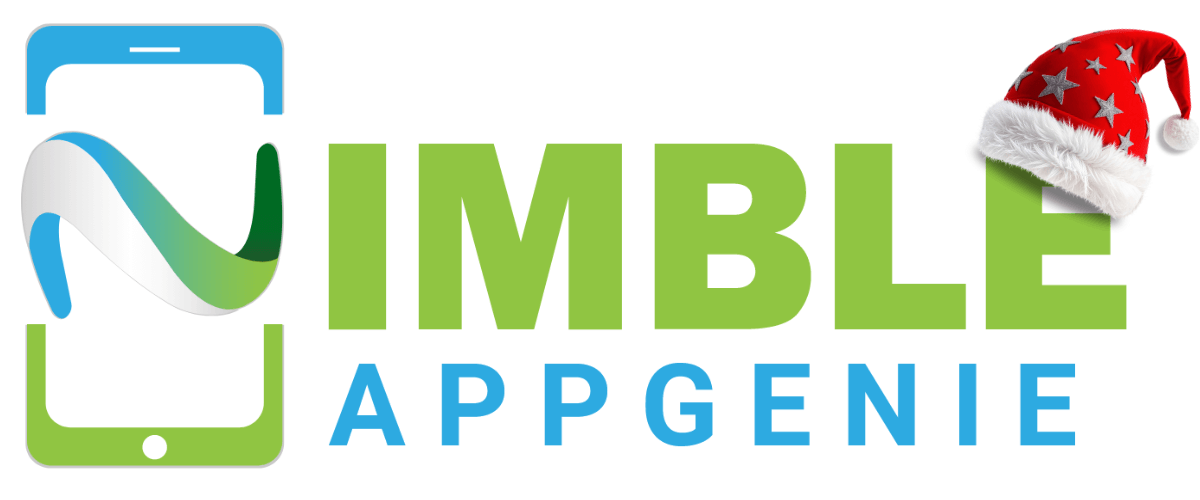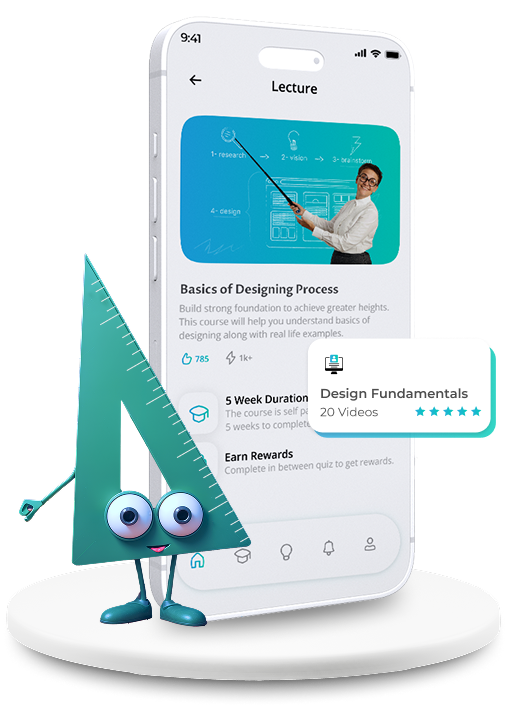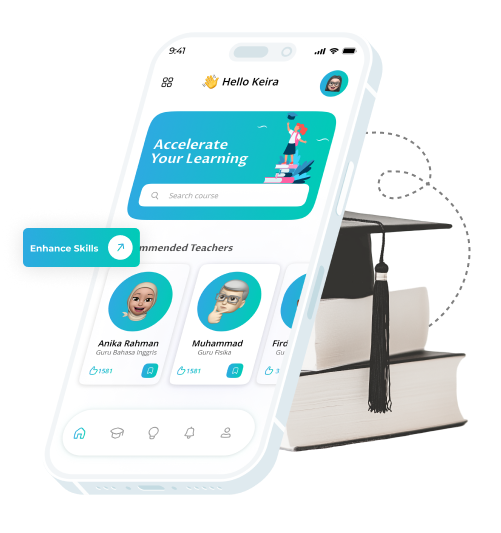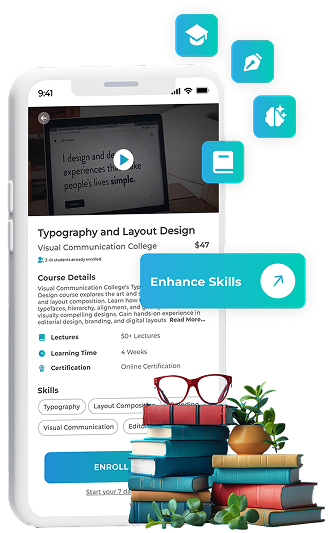
Let’s Discuss your
IDEA!

Understanding the need for different learning solutions and educational software, we at Nimble AppGenie offer a plethora of education app development services that cater to every need.

Corporate training has certainly become a crucial part of employee onboarding for several companies. If you are already working as a consultancy, or have a large pool of employees that you need to upskill, investing in a corporate training app development service can be a vital decision.

If you have an idea in your mind that you feel is different from any existing application, or you need someone to build an educational app as you see fit, then our custom educational app development service is what you need. Simply share your requirements and let the professionals take over.

Tutoring applications are popular among students who want to brush up their skills and learn with the assistance of a tutor. These apps connect a student with the tutor for online learning, offering them ease of access. Reach out to us if you plan to build a similar application.

These applications are widely available and preferred by people who are either working in a foreign land or planning to learn a foreign language. The application has some really smart use cases which makes it a great investment too. Connect now for language learning app development services.

If you already have developed an application, or are struggling with the way your education application is functioning, we can help you refine it to the best. Our educational app testing and maintenance services make it look exceptionally easy for you to experience enhanced performance.

Quiz applications and online test apps require advanced security and proctoring tools. Not only that but since there are thousands of users giving a test, it requires a lot of stability and automation. Let our experts help you build a similar platform without any loopholes with quiz app development services.

When catering to students, you need to ensure that the app interface you choose is engaging and enables retention for the users. E-learning app design services by Nimble AppGenie can help you create a minimal and clean app that resonates with a user and helps you catch more attention.

Applications that target a specific group of subjects for instance STEM - Science, Technology, Engineering & Mathematics fall into this category. You can tap the huge market of students studying these subjects/specializations by building a STEM learning app for your institution.

Gamification in education apps is a great way to attract students who use digital apps to learn. Educational games like puzzles, math games, or similar apps are very popular as even parents encourage their children to play the same. At Nimble AppGenie, we offer robust educational game development services.
With e-learning taking over the entire realm of education, several different solutions have gained immense popularity around the world. Let Nimble AppGenie design a custom education app solution that helps you stand out!
LMS are dedicated systems that allow any organization to create their system of learning where they can train a learner and track their progress.
AR and VR-based learning applications help in simplifying distance learning, giving every student an immersive experience.
These solutions are designed to entice newer students who can easily start engaging in short-form learning content.

If you already have an online learning platform, this solution by Nimble AppGenie can help you assess the performance of your students at the grassroots level.
Specifically designed for schools, these educational app solutions cater to large schools to simplify their student learning data management.
Enabling real-time distance learning, live and interactive learning apps are highly effective solutions for colleges, schools, and universities.
Being in the industry for decades we have developed some of the finest e-learning platforms and educational apps for several of our clients. Here are some insights on our recent market-breaking education applications & their impact in the market!
Add value to your educational application by integrating useful features that engage the audience better and give you better control.




















 Building An Education App is Easy with Nimble AppGenie
Building An Education App is Easy with Nimble AppGenie 
Planning to start your e-learning platform but don’t know where to start? It’s time to connect with the experts. Kickstart your journey now!
Connect NowEducation apps that are already doing great often become an inspiration for others to enter the market. At Nimble AppGenie, we not only help you with a robust & scalable e-learning app but also assist you in following the footsteps of these existing players so you can replicate the success that they have achieved in the field.
Education app development has always been our forte, as we understand the needs of the education industry. The best part is that we get to be a part of our client's success journey. Here are some of those stories as seen on Clutch!
 Start Your Successful Education App Business
Start Your Successful Education App Business 
The education app industry is booming with new opportunities for growth and revenue. Capitalize today with Nimble AppGenie!
Connect Now!A lot of technologies are involved in building an education app from scratch. Hence you need to identify what functions you want to integrate and accordingly choose a tech stack. At Nimble AppGenie, we work with scalable technologies that are easy to upgrade, helping set new standards of e-learning.
Our dedication to offering education app development services, and the fact that every solution delivered by us has generated exceptional returns for our clients is what motivates us to do better. With every project that we take up, we try to level up and deliver the best possible solution. With a vision-oriented approach by our side, we are perfect partners to guide you through!

All of our developers are highly qualified and have years of experience in delivering quality education app development services to guide you the best.

At Nimble AppGenie we are always ready to take up custom education app development projects. If you have an educational app idea, let’s execute it together!

Security in your education application is crucial as there are different types of user data involved. Our experts implement encryption for enhanced reliability.

Leveraging third-party solutions by integrating APIs that offer further functionalities is vital to your e-learning application and we can help you achieve the best results.

We are always moving forward with the most innovative technologies. If you plan to leverage AI for analytics & insights, we are the ones you call!

We take pride in every recognition we get as they surely boost our morale, allowing us to build more innovative and better educational applications.
Get expert insights into the most frequently asked questions, from features and technology stacks to cost estimation and development timelines. Our education app development company provides in-depth answers to help you make informed decisions.
The cost of developing an education app ranges from $20,000 to $200,000. It is based on factors like app complexity, design requirements, and the technology stack used.
Yes, we can integrate various third-party tools and services, such as payment gateways, CRM systems, and analytics tools, to enhance the functionality of your education app.
We utilize a range of advanced technologies, including AI, AR/VR, machine learning, cloud computing, and gamification, to create innovative and engaging educational apps.
We develop education apps for multiple platforms, including iOS, Android, and web. We can also create cross-platform apps that work seamlessly across all devices.
The timeline for developing an education app typically takes between 3 to 6 months, including design, development, and testing phases.
Nimble AppGenie is committed to delivering results that satisfy our client’s needs and their business objectives. Here are testimonials from our clients about their experiences of working with us.
We hired Nimble AppGenie for web development services related to our edtech platform, Glu Learning. They integrated well with our team to solve all the problems and deliver remarkable solutions. Their team have great command of both client side and server side technology. We highly appreciate and recommend their services.
"Our journey with Nimble AppGenie is defined by their consistent availability, reliability, and efficiency. As we look towards expansion, I'm confident our partnership will grow even stronger. And we are eagerly anticipating the next chapter with them.

Read our blogs about the latest industry trends and much more inthe mobile app development industry.